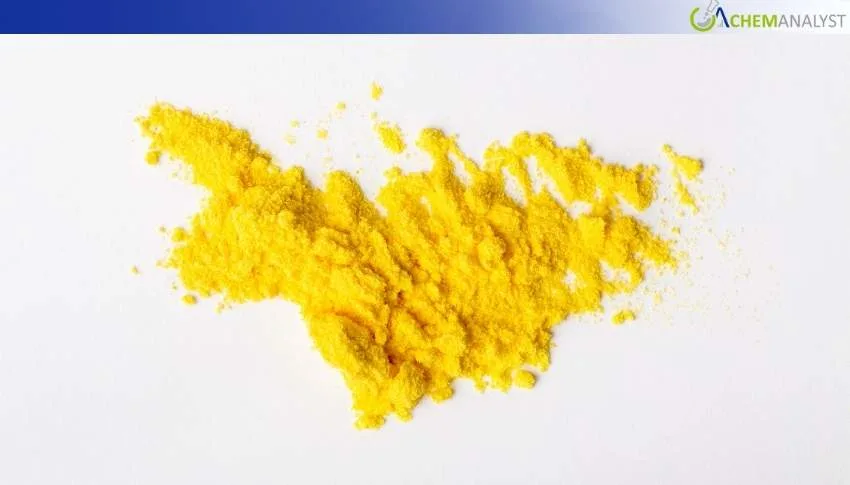Welcome To ChemAnalyst

The sulphur prices in the Asian markets started climbing at the end of November 2025 due to increased costs and supplies, notwithstanding low demand. In China, prices of granular sulphur and sulfuric acid have risen tremendously, consequently, the MAP price rise constituted another problem for the fertiliser sector. The Indian scenario was marked by a shutdown of the Hindustan Petroleum Corporation Ltd. plant in Mumbai for the period of 1st to 15th November. Demand was slightly on the conservative side with low stock levels even with a rise in MAP shipments. Record imports of ammonium sulphate into Brazil further impacting sulphur significance globally.
Sulphur prices in Asia began to strengthen towards the end of November 2025, due to rising costs and supply constraints. The factors that drove market sentiment in Asia included developments in both India and China, where maintenance and cost constraints led to an increase in prices despite sluggish downstream demand.
In India, there was a maintenance shutdown at the Mumbai facility of Hindustan Petroleum Corporation Limited (HPCL) from November 1–15. The maintenance shutdown was precipitated by contaminated crude oil entering the refining process, leading to corrosion in subsequent units and resulting in lower production, including the shutdown of the Continuous Catalytic Reformer unit. Although HPCL cited no direct effect on sulphur supplies, it exposed the weakness in the current capacity in the region. Traders said any further disruption could reduce supplies and contribute to greater optimism in the sulphur market.
On the other hand, in the Chinese market, sulphur as well as sulfuric acid prices failed to halt rising. As reported in the China Chemical News, granular sulphur prices at Yangtze River Port increased since the beginning of November. The increase resulted in a jump in prices. Further, Sulfuric acid prices remained up in terms of monthly performance. These rising prices further impacted the MAP prices, as MA prices' increase was not in line with sulphur prices’ drastic increase.
In the fertilizer industry, there was a struggle between strong support from cost and weakness in demand. In terms of compound fertilizers, there was caution from downstream manufacturers who procured goods on demand, and there was conservative inventory from distributors. Demand from the agricultural sector in the Sulphur market has not emerged in large quantities, so far, which makes it difficult for the Sulphur industry to transmit costs. However, the backlog of MAP shipments in China was up in the third week of November.
Globally, the importance of sulphur in the fertilizer trade was further accentuated by the record importation of ammonium sulphate by Brazilian countries, which registered a sharp year-on-year increase. Ammonium sulphate was in greater demand than urea because of the latter’s low cost of nitrogen. Further support was sustained in Asia because manufacturers believe that there will be strong sulphur demand from the downstream fertilizer sectors in the next few months.
By late November, Asian sulphur prices remained strongly supported by both cost-push factors and global fertilizer market trends.
As per to ChemAnalyst, although the demand for sulphur is cautious, the growing fixed costs of raw materials and lack of supply flexibility imply that Sulphur prices will continue to trade at current highs in the short term. Market players are keeping a close eye on the Indian refining industry, the Chinese sulfuric acid market, and the pace of agricultural demand revival in Asia.
We use cookies to deliver the best possible experience on our website. To learn more, visit our Privacy Policy. By continuing to use this site or by closing this box, you consent to our use of cookies. More info.
